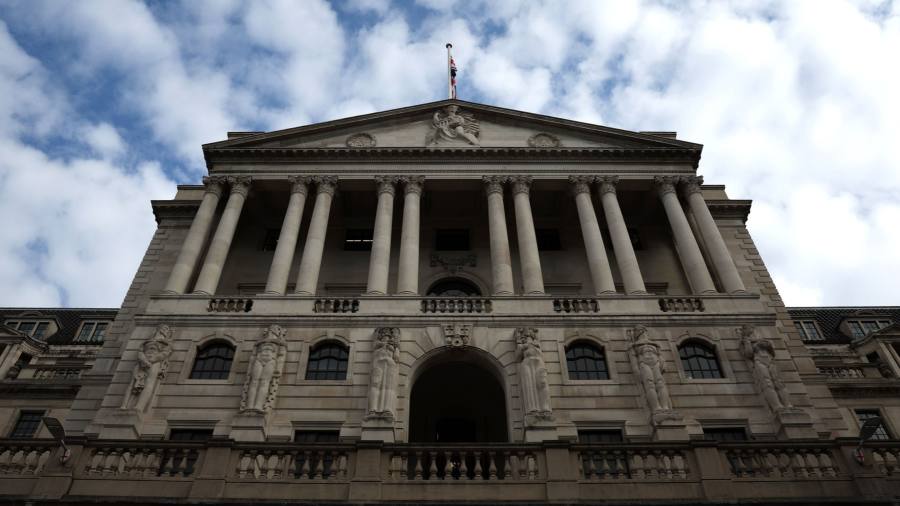Receive free UK equities updates
We’ll send you a myFT Daily Digest email rounding up the latest UK equities news every morning.
The UK has missed out on this year’s stock market party, but a bit of catch-up may be in order.
Up to now, it has been very much off the guest list, putting in a paltry just-about-positive performance while most big national stock indices are off to the races. Sure, flipping the FTSE 100 into dollars is significantly more flattering, especially since a drop in the pound this week. But even then, the UK is trailing a long distance behind other stock indices in the US, Europe and much of Asia.
Hargreaves Lansdown pointed out earlier this month that the UK market had been “left for dust” after a comparatively decent 2022.
Big investors are sceptical over the global rally in stocks this year, but the UK still sticks out. Bank of America’s regular survey of fund managers shows a net 21 per cent of money managers are running a smaller allocation to UK stocks than benchmarks would suggest. That’s chunky. For the US, the net underweight percentage is a more modest 10 per cent and for the eurozone it is just 1 per cent. So, even though UK stocks are cheap as chips — a price-to-earnings ratio of 9.7 plays 13 in the eurozone and an eye-watering 24 in the US — global investors have just not been biting.
Goldman Sachs has described UK stocks as suffering from a “buyers’ strike” — on brand perhaps, given the country’s rolling industrial action by teachers, nurses and transport staff. The bank points out that in the first quarter of this year, “all the net buying of UK stocks was by corporates themselves” through, for example, buybacks.
Meanwhile, foreign investors and domestic funds of various kinds “were all net sellers”, even if not in huge size. The government’s ambitions to fire up markets have been broadly well received, but generating homegrown demand for UK stocks from big investors will be tricky, the bank said, and households are likely to use any spare funds to pad out newly juicy deposit accounts rather than punting on stocks.
In addition, fund managers remain downbeat on prospects for the UK economy, mainly because of homeowners’ fondness for short-term fixed-rate mortgages. Thousands of households are still clinging on to mortgages with a 1.5 per cent interest rate that will turn into mortgages at a monster 5 or 6 per cent in the coming months. As the effects of monetary policy lags go, that is long, variable and painful, as I know from personal experience. Next spring, I may have to send the children to work in the salt mines, and eat the dog. (Only kidding, we wouldn’t eat the dog.)
And yet it does make sense to turn somewhat more optimistic on UK stocks. One reason for that is that the economy itself is something of a sideshow. “We’re seeing something a bit disconnected from the macro,” said Christian Abuide, head of asset allocation at Lombard Odier. “We have the changes in rates, the mortgages . . . but the equity market is not connected with the domestic economy.” Some UK sectors such as pharmaceuticals present nice potential opportunities, he said.
The other big, related reason, is the latest inflation data, released on Wednesday. The inflation rate is still too high — running at an annual pace of 7.9 per cent in June, well above the BoE’s 2 per cent target. But that represents a massive, unexpected drop from 8.7 per cent in the previous month. It is never worth getting carried away by just one data release, but it is not unreasonable to hope that the worst on inflation may be behind us — hence last week’s sizeable drop in UK government bond yields and jump in shares of homebuilders. That helped UK stocks to churn out one of their best weeks since 2020, including a 3 per cent gain in the FTSE 100.
For stocks, the really important effect of the tamer inflation data was the approximately 1 per cent drop in the pound — catnip for the UK market. Recall that when the pound plunged in 2016 after the Brexit referendum, the FTSE gained 25 per cent by the end of that year.
Caroline Simmons, UK chief investment officer at UBS Wealth Management, noted that less than a third of all revenues in the FTSE 100 come from inside the UK, so a strong pound represents a sizeable drag. “Very roughly”, she said, “a 10 per cent increase in sterling could lead to a 7 per cent decrease in earnings for the FTSE 100.”
Predicting where currencies are heading is something of a fool’s errand but it does seem plausible that a meaningful patch of sterling weakness lies ahead, either because the inflation rate floats lower, taking the pressure off the BoE to push interest rates beyond 6 per cent, or because the Bank tips the country into serious pain.
The unexpected fall in inflation kick-started “a bit of a rethink about how many more rate hikes the Bank of England will inflict on borrowers”, wrote Kit Juckes, an analyst at Société Générale. “Sterling has reacted by falling sharply, immediately wondering whether the [central bank] has tightened too much and the economy’s heading into a ravine.”
That is a sobering thought, but not necessarily a reason to shy away from UK stocks. It is just possible that the buyers’ strike on the FTSE will end before the trains start running normally again.
Read the full article here



